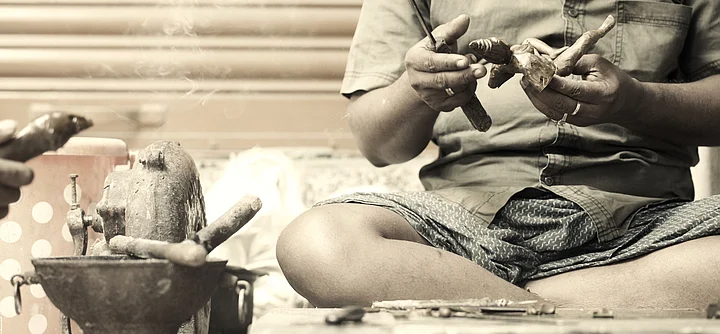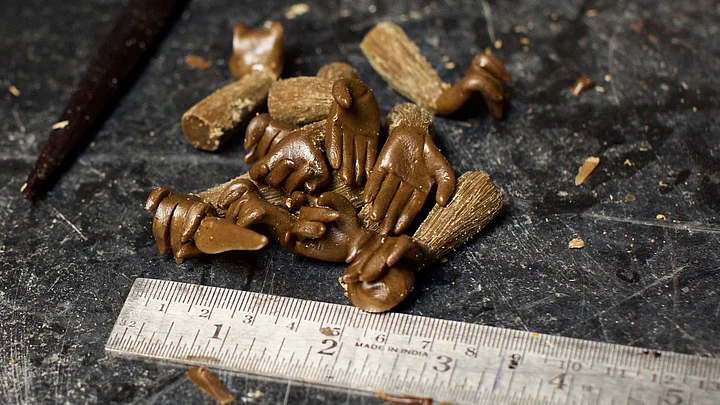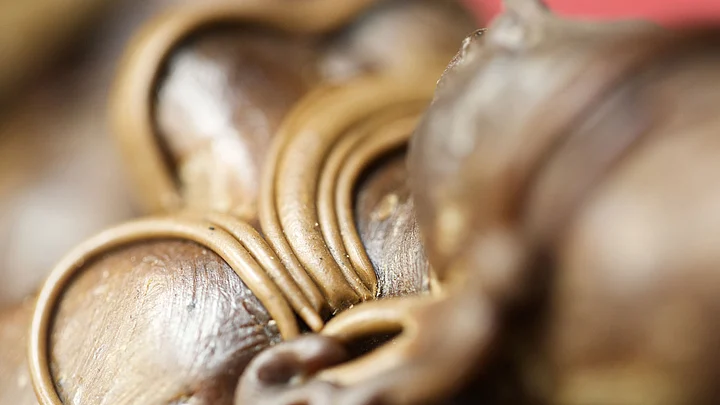Sculptors in Mahabalipuram near Chennai use a 6,000-year-old technique to create an idol of a ten-handed Goddess. Watch as the ‘Sthapathi’ works his magic with wax in stunning detail, only to have it melted away completely by fire.
In contrast to the the ancient part of this process, the idol is then taken to a world-class factory, where gold ions coat every micrometre of its surface.
The ‘lost wax technique’ is the first in a series on ‘How Stuff Gets Made’. Stay tuned for more!
The ‘Sthapathis’ of Mahabalipuram
Mahabalipuram is a seaside tourist spot an hour’s drive from Chennai. The place is strewn with little temples and half-finished stone sculptures. It is also home to hundreds of ‘Sthapathis’.
A Sthapathi is an architect/sculptor who belongs to a lineage thousands of years old. Originally from Vellore (a city two hours South of Chennai), the Sthapathis migrated to Thanjavur in the 12th century, during the reign of Rajaraja, to work on the Bruhadeeswara temple, which today stands as a national monument.
Making a sculpture from stone and making one using metal are two completely different art forms that are equally beautiful to watch. The metal idols are often replicas of the stone idol placed in the sanctum.
The ‘lost wax technique’ is employed to make metal sculptures. This was (exactly) how the ‘Dancing Girl’ of the Harappan civilisation was made 5,000 years ago. The actual technique predates this by a good thousand years or more.
The level of detailing in the wax model decides the intricacy, and ultimately the price, of the final bronze idol.
Even today, many temples and patrons prefer the ‘Panchaloha’ (five metal alloy) to bronze. But it is much more expensive and tougher to execute.
Gold Plating 2.0
As a civilisation, we have been fixated on gold for thousands of years. The art of gold plating has an equally hoary past. In Tamil Nadu, gold plating – which finds great patronage in Hindu temples – is called ‘Mulam’ (coating). The temple patrons (in some cases, the government) decide the quantity of gold needed to coat an idol, or the Dhwaja Sthambha (ceremonial pole), and the artisan executes the work.
Since it is next to impossible to accurately measure the amount of gold used, the trade depends heavily on word of mouth, trust and lobbying.
It is only recently (for a little over a decade), that India has taken to modern techniques of gold plating. The chief difference between the old and new techniques is that in the latter, it is possible to work with 24 carat gold (traditional techniques regularly use 22 carat gold). It is also possible to measure the amount of gold used, and to spread it evenly.
This level of exactness comes in handy not just within the temple community – which is still slow in adapting to this – but to the scientific community. Aeronautics and space travel depend on their internal labs for gold-coating satellites. These services can now be outsourced.
While the process is straightforward, the trick is in identifying the right mix of chemicals, temperature and timing.
What is tougher to do though, is find acceptance among the patrons. Imagine trying to explain 'gold ions' and cathode bars and microns, to 55-70 year old 'Karyakarthas' (temple officers), whose understanding is limited to the kilos of gold that are to be purchased!
(At The Quint, we question everything. Play an active role in shaping our journalism by becoming a member today.)


